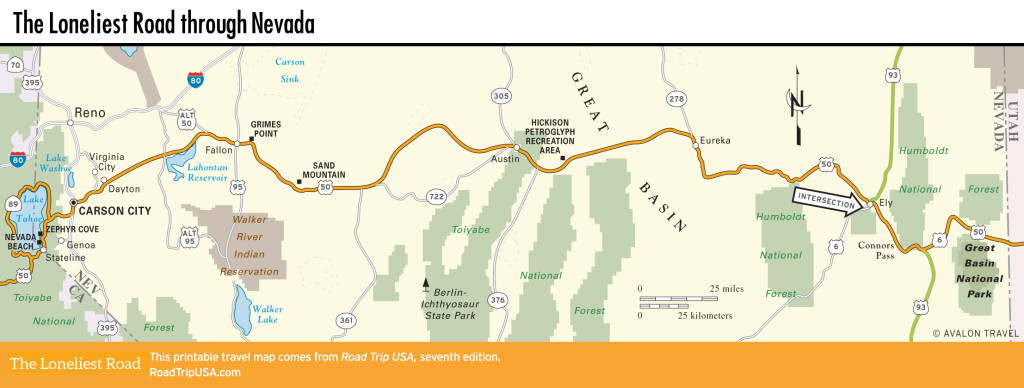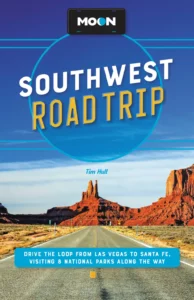Virginia City
In 1859, prospectors following the gold deposits up the slopes of Mt. Davidson discovered one of the richest strikes in world history: the Comstock Lode. Almost overnight, the bustling camp of Virginia City grew into the largest settlement between Chicago and San Francisco, and over the next 20 years nearly a billion dollars in gold and silver (in 19th-century dollars!) was grubbed from deep underground. Afterward the town nearly dried up and blew away, but thanks in part to the 1960s TV show Bonanza, in which Hoss and company were always heading over to Virginia City for supplies or to fetch the sheriff, tourists discovered the town and gave it a new lease on life.
These days Virginia City (pop. 855) is both a tacky tourist trap and one of the most satisfying destinations in the state. It is reachable via a steep (grades in excess of 15 percent) 8-mi (12.8-km) drive up Hwy-341 from US-50. Dozens of hokey but enjoyable attractions—like the amiable Bucket of Blood Saloon, which offers a panoramic view down the mountain—line the five-block-long main drag, C Street. The streets above and below—and I do mean above and below: the town clings to such a steep slope that C Street is a good three stories higher than neighboring D Street—hold some of the most authentic sites. B Street, for example, has the elegant Castle, Nevada’s premier mansion, with all the original furnishings and fittings, a block south of the ornate Victorian Storey County Courthouse and the landmark Piper’s Opera House. Down the hill on D Street was once a more raucous quarter, where brothels and opium dens shared space with railroad tracks, cemeteries, and the mines themselves: the Gould, Curry, the Ophir, and the Consolidated Virginia.
Before or after a wander around town, be sure to stop in to the excellent museum on the ground floor of the Fourth Ward School Museum (775/847-0975, daily May-Oct., $6), the Victorian Gothic landmark at the south end of C Street. Exhibits inside recount the lively history of Virginia City, from mining technology to Mark Twain, who made his start as a journalist with Virginia City’s Territorial Enterprise. An intact classroom is preserved as it was in its heyday through the late 1880s to 1936, when the last class graduated. Other intriguing stops are the handful of historic fraternal, civic, and religious cemeteries at the north end of Virginia City, where delicate wrought-iron fences surround elaborate tombstones.
Unless you’re tempted by the many places to eat hot dogs and drink sarsaparilla along C Street, food options in Virginia City are limited. C Street is home to the Red Dog Saloon (76 N. C St., 775/847-7474), where tasty bar food is served up in an historic space that played a crucial role in the development of West Coast psychedelic music in the years before the Summer of Love.















